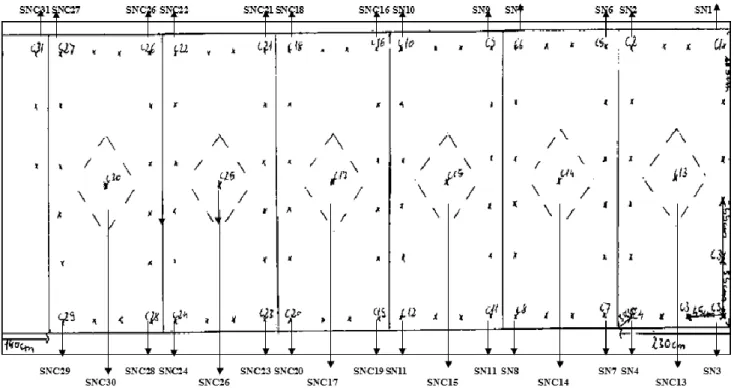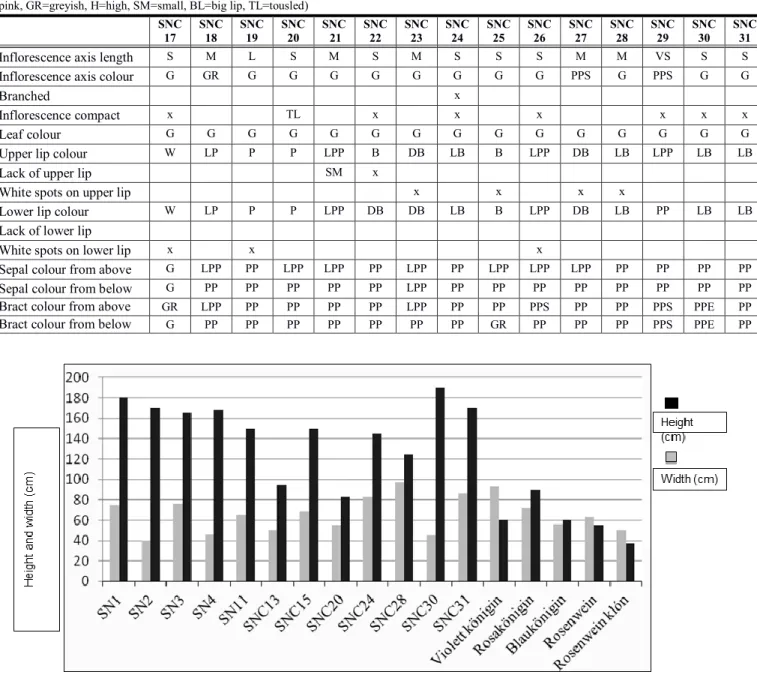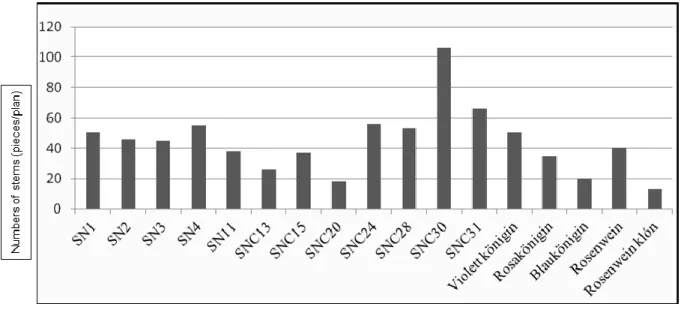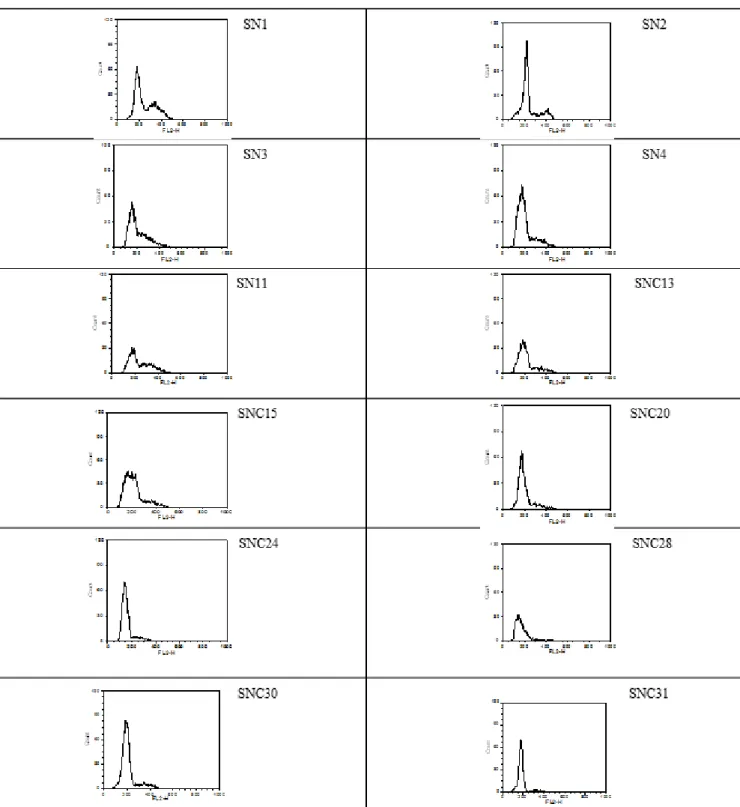E COCYCLES
ISSN 2416-2140 of the European Ecocycles Society
Ecocycles, Vol. 5, No. 2, pp. 24-32 (2019)
DOI: 10.19040/ecocycles.v5i2.148
ORIGINAL ARTICLE
Horticultural uses of botanical variations of woodland sage (Salvia nemorosa L.)
T. Kaprinyák¹ and M. G. Fári²
¹Agricultural and Environmental Management Institute, Eszterházy Károly University, 3200 Gyöngyös, Mátrai u. 36., Hungary; ²Department of Agricultural Botany, Plant Physiology and Biotechnology, University of Debrecen, 4032 Debrecen, Böszörményi u. 138., Hungary
Corresponding author: Tünde Kaprinyák (kaprinyak.tunde@uni-eszterhazy.hu)
Abstract –Woodland sage (Salvia nemorosa L.) is an „underestimated” plant at present, but it may be a promising plant species for the future. This is especially true in the Central and Eastern Europe, a region exposed to certain climate changes, such as the more extreme weather, the fluctuation of rainfall distribution, the increasing of temperature, the rapid and unfavorable changes of climate in densely populated cities, the heat-island effects, the atmospheric drought, etc. Therefore, Salvia nemorosa seems to be a very promising plant for future generations. The searching and collecting program of the wild botanical variants of woodland sage were launched in 2009, as part of two botanical expeditions carried out in Hungary.
Keywords – climate change, woodland sage, Salvia nemorosa L., wild botanical variations, horticultural use Received: October 22, 2019 Accepted: December 7, 2019
1.INTRODUCTION
Woodland sage, as an ornamental plant has a considerable drought-tolerant capability (Kaprinyák et al. 2012). A botanical expedition launched in 2009 to search and collect the lusus forms of woodlands sage discovered by the famous Hungarian ornamental breeder, Zoltán Kováts in the years of 1930s. The next expeditions were organized in 2010 and in 2011. The main aim of these expeditions was searching for natural woodland sage populations located in Hungary and their botanical description of the valuable versions, as well as study of their hereditary characteristics, flowering possibi- lities (Váradi 2013).
2.MATERIALS AND METHODS
2.1. Location of the experiment, geographical condition 2.1.1. The original habitat of Salvia nemorosa variation Figure 1 shows the Sites of Salvia nemorosa variation in Gáborján (Kováts 2010).
2.1.2. Location of the field experiment, condition
The field experiments were carried out at the Plants for the Future Biomass Demonstration Garden of the University of Debrecen, where the soil properties were previously analyzed (Table 1). The mother plants were originated from the flood
zone of Berettyó river. Applying these mother plants and clones of the varieties, developing by splitting, were further propagated under field conditions. Because of the additional water supplementing was realized here by flood-irrigation, we transferred the strong-rooted woodland sage variations in blocks cassette. Five plants were places into one cassette, all- together 25 plants of different colors were planted in our experiment plot. The plants were spaced 50 x 50 cm distance from each other (Figure 2.).
Figure 1. Sites of Salvia nemorosa variation (Gáborján, 2009, Kováts 2010)
25
Table 1. Chemical and biochemical properties of the soil at the Plants for the Future Biomass Demonstration Garden of the University of Debrecen (Alshaall, 2013)
Soil properties or parameters Value
pH 7.63
Electrical conductivity (dS m-1) 0.45 Soil organic carbon (g kg-1) 19.14 Dehydrogenase (µg TPF g-1) 30.20 Phosphatase (mgP2O5/100g soil/2h) 0.54
Urease (NH4+ mg/100g soil) 363
Catalase (O2 ml/2min) 13.0
Total bacterial count (x 107 CFU/g) 1.24 Total fungi count (x 105 CFU/g) 0.56 2.2. Method of experiments
2.2.1. Establishment of the field population
In 2010, by the guidance of Zoltán Kováts, the members of our team organized an expedition for mapping some natural woodland sage population located in Hungary. The exploratory work continued in the next year in June, at the end of the flowering phenological phase. After cultivating the broke cuttings in plots, the mother plants and clones were grown under field conditions. In 2013, 12 varieties were picked up from the variations having high shape and color
aesthetic value by positive selection and they were individually placed in order to prevent seed collecting.
2.2.2. Botanical measurements of the selected variations In 2013, we measured the plant height, habit, length of inflorescence axis, number of inflorescence per axis, leaf color, and the upper and lower lip’s color (Váradi 2013). The individual stamps were continuously recorded in the period of flowering and counted the amount of the flowers per plant.
2.3. Molecular genetics methods
2.3.1. Comparison of ploidy level in woodland sage variations by flow-cytometry
After collecting the shoot apexes originated from the field population, the sample was used on a 1 cm2 leaf surface.
Measurement device: Becton Dickinson FAC Scanflow cytometer (Lisztes-Szabó 2015). The calculations were conducted according to the database of the Kew Royal Botanical Gardens (I1, Table 2).
Table 2. Ploidy level of Salvia nemorosa according to the Kew Royal Botanic database (I1)
Plant group Species Ploidy level 2C (pg)
Angiosperm Salvia nemorosa 1.09
C Mean C Min. C Max. Standard deviation 2C (pg) 1.09 1.09 0.00
Figure 2. Field planting map of Salvia nemorosa L. botanical variations, (University of Debrecen MÉK, Plants for the Future Biomass Demonstration Garden 2011)
26
2.4. Evaluation and analysis of experimental data Applied statistical method: ROPstat 2.0, date of the last significant revision: June of 2011 (Vargha, 2011).
Figure 3/a. Inflorescence axis (A) and petal appearance (B) of Salvia nemorosa variations ( = 1 cm)
3.RESULTS
3.1. Botanical evaluation of valuable Salvia nemorosa variations (2012-2014)
3.1.1. Evaluation of woodland sage variations in aspect of horticultural usability
According to the literature, woodland sage has extremely broad morphological botanical variability (Natarajan and Kuchny, 2008). Tables 3/a, 3b, and Figures 3/a and 3b.
illustrate the broad genetic variability of our newly collected variations.
Figure 3/b. Inflorescence axis (A) and petal appearance (B) of Salvia nemorosa variations ( = 1 cm)
Table 3/a. Evaluation of different woodland sage varieties (M=medium, L=long, S=short, G=green, LG=light green, DG=dark green, B = blue, LB=light blue, PP=purple, LPP=light purple, PS=purple stripe, PSP=purple spots, W=white, P=pink, LP=light pink, GR=greyish, H=high, BL=big lip)
SN1 SN2 SN3 SN4 SN5 SN6 SN7 SN8 SN9 SN 10
SN 11
SN 12
SNC 13
SNC 14
SNC 15
SNC 16
Inflorescence axis length M M M L M S M S S M
Inflorescence axis colour G PSP P G G G G G G G
Branched x H x
Inflorescence compact x x x x
Leaf colour G G G LG G G LG LG LG G
Upper lip colour B LPP PP LP LB PP W W W LPP
Lack of upper lip x BL x
White spots on upper lip x
Lower lip colour B LPP P LP LB PP W W W LPP
Lack of lower lip x BL x
White spots on lower lip x x
Sepal colour from above PP PP PP P PP PP DG GR LG G
Sepal colour from below PP PP PP P PP PP G LG LG G
Bract colour from above PP PPS P LPP LG PPS LG GR GR PP
Bract colour from below PP PPS PP P G PPS G G G PP
27
3.1.2. Comparison parameters of woodland sage botanical variations
Figure 4 shows variations according to the comparison of their height and width. Twelve valuable woodland sage botanical variations were found according to habit in 2014 (Figure 5):
Erect habit: SNC3, SNC13, SNC20
Half-postrate habit: SN1, SN11, SNC15, SNC24, SNC28, SNC31
Postrate habit: SN2, SN4, SNC30
In 2014, the shoot developing tendency was measured, which represents the number of the stems located on one plant.
Variation SNC30 was significant (Figure 6); meanwhile, the stem developing value of clone SNC20 and clone
’Rosenwein’ was equal. Figure 7. shows the differences between the main inflorescence axis length of the varieties and cultivars. The maximum value was measured in case of the ’Violett Königin’ and SNC24 clone. Among the botanical variations the smallest main inflorescence axis length was recorded in case of SN4 and SNC31 clones, among the cultivars the smallest values were measured in the case of
’Blaukönigin’ and ’Rosenwein’ cultivar. Based on the comparison of main inflorescence weight (Figure 8) the SN2 and SN3 variations showed the highest weight and the main inflorescence of the SNC20 was the smallest. The inflorescence weight of ’Rosenwein’ clone variations is appreciable in comparison with the ’Rosenwein’ cultivar.
Table 3/b. Evaluation of different woodland sage varieties (M=medium, L=long, S=short, VS=very short, G=green, LG=light green, DG=dark green, B=blue, LB=light blue, DB=dark blue, PP=purple, LPP=light purple, PS=purple stripe, PSP=purple spots, PPE=purple edge, W=white, P=pink, LP=light pink, GR=greyish, H=high, SM=small, BL=big lip, TL=tousled)
SNC 17
SNC 18
SNC 19
SNC 20
SNC 21
SNC 22
SNC 23
SNC 24
SNC 25
SNC 26
SNC 27
SNC 28
SNC 29
SNC 30
SNC 31
Inflorescence axis length S M L S M S M S S S M M VS S S
Inflorescence axis colour G GR G G G G G G G G PPS G PPS G G
Branched x
Inflorescence compact x TL x x x x x x
Leaf colour G G G G G G G G G G G G G G G
Upper lip colour W LP P P LPP B DB LB B LPP DB LB LPP LB LB
Lack of upper lip SM x
White spots on upper lip x x x x
Lower lip colour W LP P P LPP DB DB LB B LPP DB LB PP LB LB
Lack of lower lip
White spots on lower lip x x x
Sepal colour from above G LPP PP LPP LPP PP LPP PP LPP LPP LPP PP PP PP PP
Sepal colour from below G PP PP PP PP PP LPP PP PP PP PP PP PP PP PP
Bract colour from above GR LPP PP PP PP PP LPP PP PP PPS PP PP PPS PPE PP
Bract colour from below G PP PP PP PP PP PP PP GR PP PP PP PPS PPE PP
Figure 4. Height and width parameters of Salvia nemorosa lines / varieties (2014)
28
Figure 5. Habit of valuable Salvia nemorosa botanical variations (2014)
Figure 6. Stem development tendency of woodland sage botanical variations and cultivars in 2014 (pieces/plant)
29
Based on the number of petals located in inflorescence axis (Figure 9.) the value of SN2 and SN3, as well as the SNC31 clone were the highest, the SNC13 and SNC20 variations had less petals. Among the cultivars a conspicuous contrast was observed as the ’Rosenwein’ has little petal comparing to its own clone.
3.2. Comparison of ploidy level in botanical woodland sage variations by flow-cytometry
As a control plant we chose Bellis perennis species (Figure 10). Figure 11 shows ploidy level of the 12 sage variations /
clones. Based on the nucleus DNA content of daisy we estimated the DNA content of the individuals ranged from 0.87 – 1.37 pg (Table 4). The mean value of this data corresponds to 1.09 pg value found in the Kew’s database.
There was no detectable difference in ploidy level between the botanical woodland sage variations / clones.
Figure 7. The axis length of main inflorescence in Salvia nemorosa cultivars and vain 2014 (cm)
Figure 8. The weight of main inflorescence in Salvia nemorosa cultivars and botanical variations in 2014 (pieces/g)
30
Table 4. Estimated DNA content based on the Kew database evaluation
Sample SN1 SN2 SN3 SN4 SN11 SNC
13
SNC 15
SNC 20
SNC 24
SNC 28
SNC 30
SNC 31 Value (pg) 1.15 1.37 0.99 1.08 1.15 1.17 1.03 1.13 0.87 0.89 1.20 1.12 Figure 9. Petal numbers of main inflorescence of woodland sage in 2014 (pieces/axis)
Figure 10. Ploidy level of Bellis perennis on Salvia sp. setting and its measuring range
31
CONCLUSIONS AND RECOMMENDATIONSWe evaluated the collected woodland sage botanical populations based on morphological parameters. I selected the valuable types having ornamental horticulture value (leaf color, upper and lower lip color, habit, etc.). The vegetatively propagated clones of collected new sage variations can be
planted with each other or together with other drought- tolerant annuals, and perennials in public gardens.
ACKNOWLEDGMENTS
With this written article we want to remember Dr. Zoltán Kováts, who dealt with this plant enthusiastically by searching and preserving its new botanical variations.
Figure 11. Nuclei fluorescence of leaf samples with PI painted of Salvia nemorosa botanical variations/ clones
32
Part of this work has been presented at the 15th International Scientific Days of Karoly Robert College (Gyongyos) on March 31, 2016.
REFERENCES
Alshhaal, T.: 2013. Remediation and restoring marginal lands with biotechnologically propagated giant reed (Arundo donax L.). University of Debrecen. Ph.D. dissertation. Debrecen. 36 -41.
Kaprinyák, T; Koroknai, J.; Zsiláné, A. A.; Szakadát, Gy., Kováts, Z.; Lévai, P. and Fári, M.: 2012. Characterization of new color variants of woodland sage (Salvia nemorosa L.) (In Hungarian). Agrartud. Kozl, 2012 (46) 41-44.
Kováts Z.: 2010. History of an expedition started in Debrecen aiming as collecting new color variants of woodland sage (Salvia nemorosa L.) (Manuscript, in Hungarian). University of Debrecen.
Lisztes-Szabó Zs.: 2015. Personal communication. Depart- ment of Plant Physiology and Biotechnology, University of Debrecen.
Natarajan, S. & Kuehny, J. S. (2008): Morphological, Physiological, and Anatomical Characteristics Associated with Heat Preconditioning and Heat Tolerance in Salvia splendens. Journal of American Society of Horticultural Sciences, 133(4):527–534.
DOI: 10.21273/jashs.133.4.527
Váradi E.: 2013. Color variants of woodland sage (Salvia nemorosa L.) (MS Thesis, in Hungarian). Institute of Horti- culture, University of Debrecen.
Vargha A.: 2007. Mathematical Statistics, 2nd Ed. (In Hungarian), Pólya Press, Budapest.
I1: Kew Databases Plant DNA C-values. C-values database.
Query the RBG Kew Plant DNA C-values database. Citation.
2012.
http://data.kew.org/cvalues/CvalServlet?querytype=1 (Acce- ssed on October 22, 2019)






